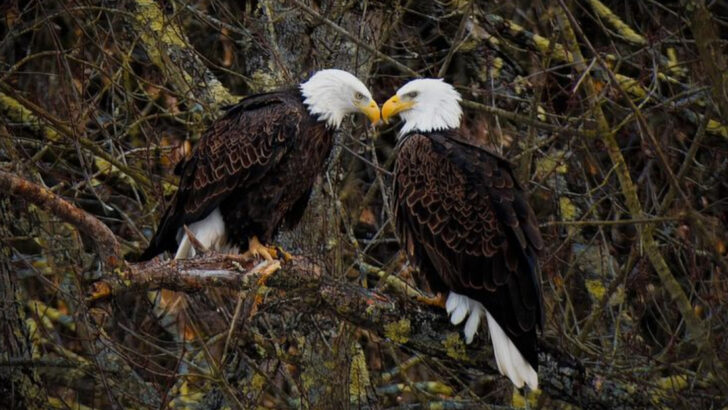They don’t sound bald.
They don’t act bald.
And they’re definitely not bald.
The bald eagle might be the most misunderstood icon in American wildlife. People see the white head and fierce eyes and assume they know the story. But behind that piercing stare is a bird full of surprises—some quirky, some awe-inspiring, and a few downright bizarre.
These raptors have tricks that would make a magician jealous.
They build nests the size of hot tubs.
They steal food like seasoned pirates.
And their famous screech? Total Hollywood lie.
Even wildlife photographers—who spend hours watching through long lenses—still get caught off guard by these birds’ odd habits and hidden talents.
So, whether you’re a nature nut, a camera-toting birder, or just someone who likes learning weird stuff about majestic animals, you’re in for a wild ride.
The bald eagle is about to shatter everything you thought you knew.
Eagle Eye Vision
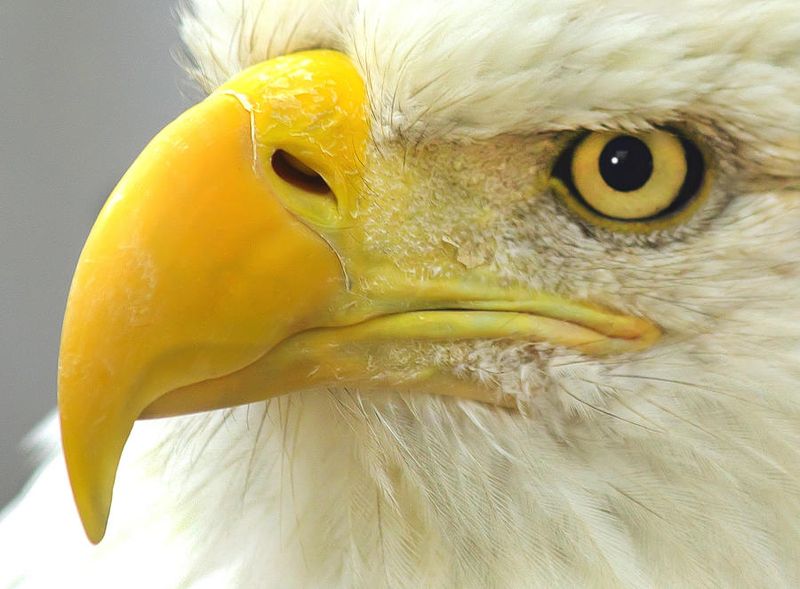
Bald Eagles possess extraordinary vision. They can spot prey from as far as two miles away. This exceptional eyesight allows them to navigate through vast terrains with ease. In fact, their eyes are almost as large as human eyes, but their vision is 4-5 times sharper.
This is due to the higher density of cone cells in their retinas, allowing them to detect even the slightest movements. So, next time you see a Bald Eagle, remember that it might be watching you too.
Their binocular vision aids in accurate depth perception, essential for hunting. Truly, their gaze is as piercing as their talons.
Aerial Acrobats
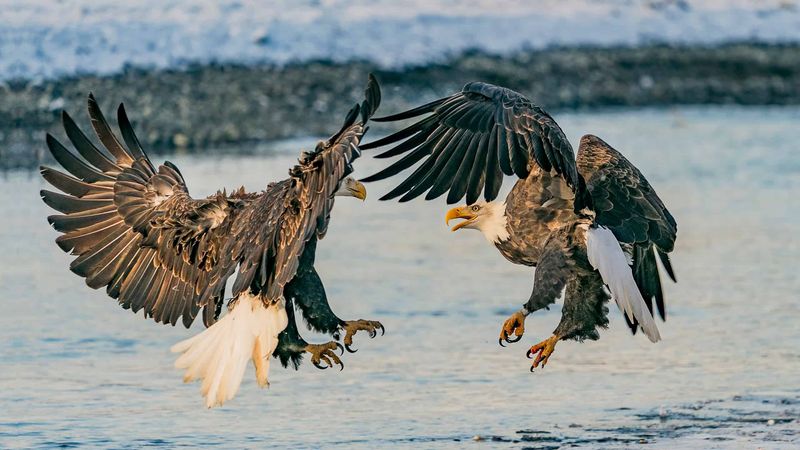
Have you ever seen two Bald Eagles locked in a mid-air dance? During courtship, these magnificent birds engage in an aerial display known as cartwheeling. They soar high, lock talons, and spin downward in a thrilling spiral before separating at the last moment.
This breathtaking performance is not just a display of affection but also a test of strength and agility. It’s a risky maneuver, showcasing their trust in one another.
Such courtship rituals highlight their acrobatic prowess and emphasize the deep bond formed between mating pairs. Nature’s ballet performed in the sky.
Nest Architects
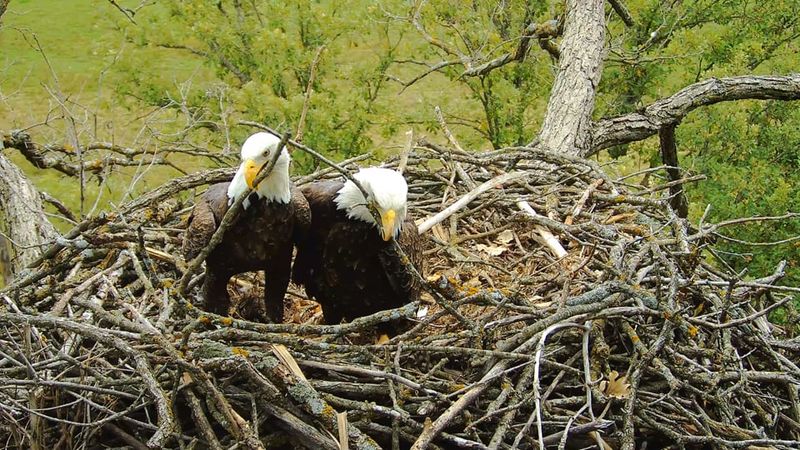
Bald Eagles are not just accomplished hunters; they are also master architects. Their nests, known as eyries, are among the largest of any bird species. Some nests can weigh up to a ton and span over eight feet across.
Constructed with sticks and lined with softer materials, these nests are often reused and expanded each year, becoming true monuments of avian engineering.
Located high in sturdy trees or on cliffs, they offer protection and a panoramic view of the surroundings. A testament to their instinctual architectural skills, these nests provide a safe haven for raising their young.
Symbol of Freedom

The Bald Eagle is a powerful emblem of freedom in the United States. Adopted as the national bird in 1782, its image is emblazoned on currency, seals, and numerous national emblems.
Chosen for its long life and majestic appearance, it represents strength, courage, and resilience. Its presence on the Great Seal of the United States underscores its symbolic importance.
Despite its revered status, the Bald Eagle faced near extinction due to hunting and environmental challenges. Conservation efforts have since restored its population, ensuring this icon continues to inspire generations.
Fishing Experts
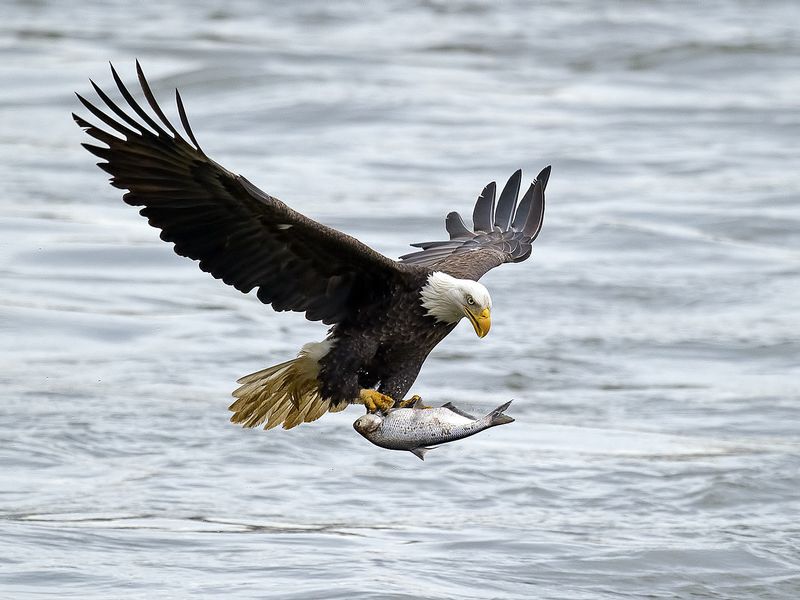
Bald Eagles are consummate anglers. With their keen eyesight and powerful talons, they can snatch fish from the water’s surface with astonishing precision.
Their hunting strategy involves soaring above water bodies, spotting potential prey, and diving with talons outstretched.
Fish make up a significant part of their diet, and during breeding season, they can catch several fish a day to feed their young. Their ability to adapt their fishing techniques to different environments underscores their role as top predators in aquatic ecosystems.
Longevity Legends
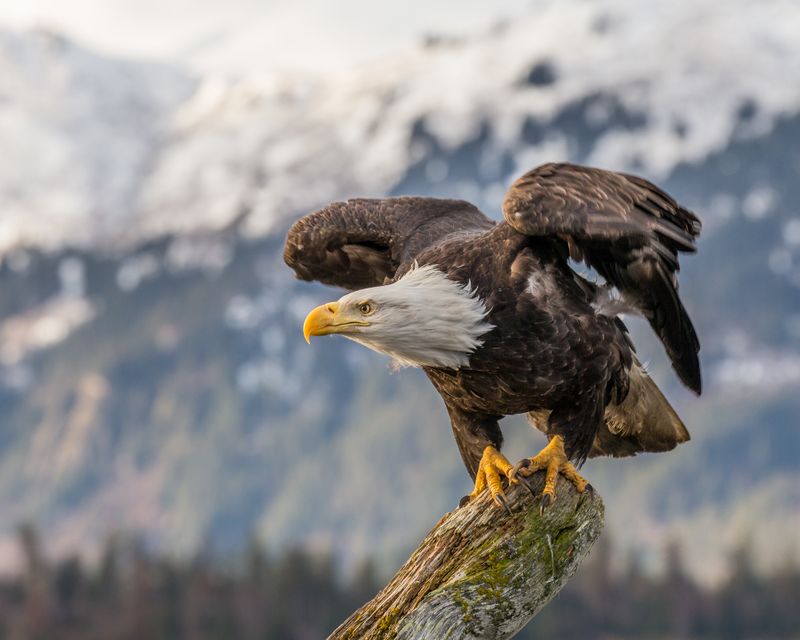
Bald Eagles are known for their impressive lifespans. In the wild, they can live up to 30 years, and in captivity, some have reached 50 years. Their longevity is a testament to their adaptability and intelligence.
Older eagles can be recognized by their more distinguished appearance and relaxed demeanor. They pass on knowledge to younger generations, ensuring survival skills are honed and perfected.
Their extended lifespan allows them to witness multiple generations of offspring, contributing to the continuity of their species. Truly, they are the wise elders of the avian world.
Bald but Beautiful
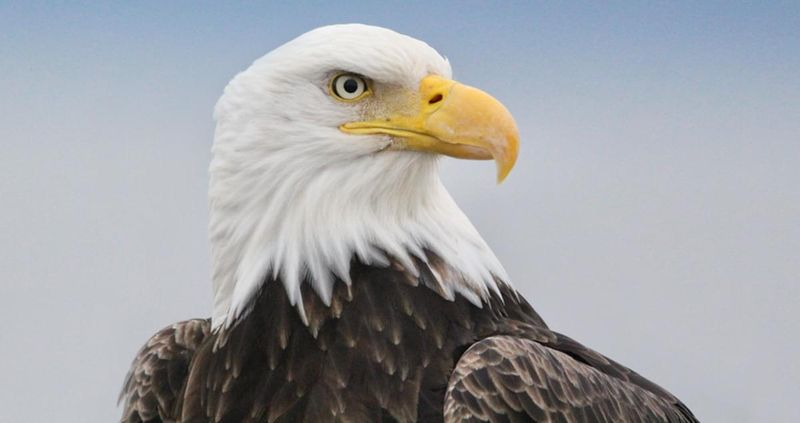
Contrary to their name, Bald Eagles are not bald. The term ‘bald’ comes from an old English word meaning ‘white-headed.’ Their striking white head and tail feathers contrast sharply with their dark brown body and wings.
This distinctive plumage develops as they mature, with juveniles sporting a mottled brown appearance. By age five, they achieve their iconic look.
This transformation symbolizes maturity and readiness to breed, marking a pivotal point in their lives. Their appearance is not just unique but also a hallmark of American wilderness.
Environmental Indicators
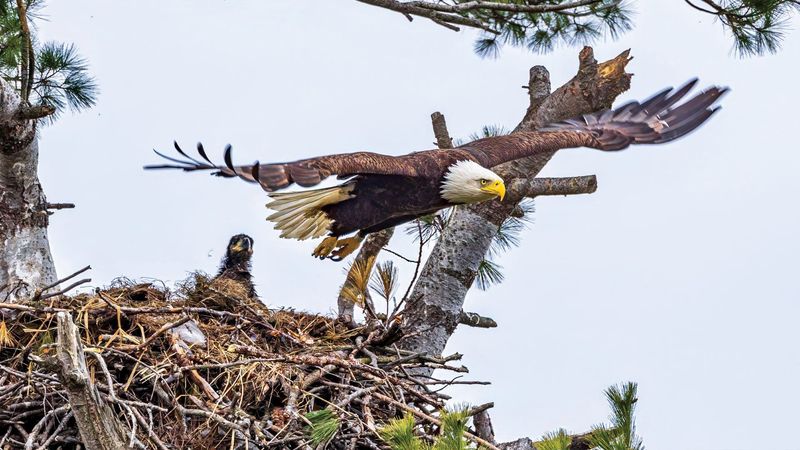
Bald Eagles serve as vital indicators of environmental health. Their presence in an area signifies a balanced ecosystem. As apex predators, they are sensitive to changes in their habitat, making them excellent barometers of ecological stability.
Pollution and habitat destruction once threatened their existence, but their recovery is a victory for conservation efforts.
Monitoring their population helps scientists gauge the impact of environmental policies and practices. Their thriving numbers are a testament to the importance of protecting our natural world.
Eagle Ears
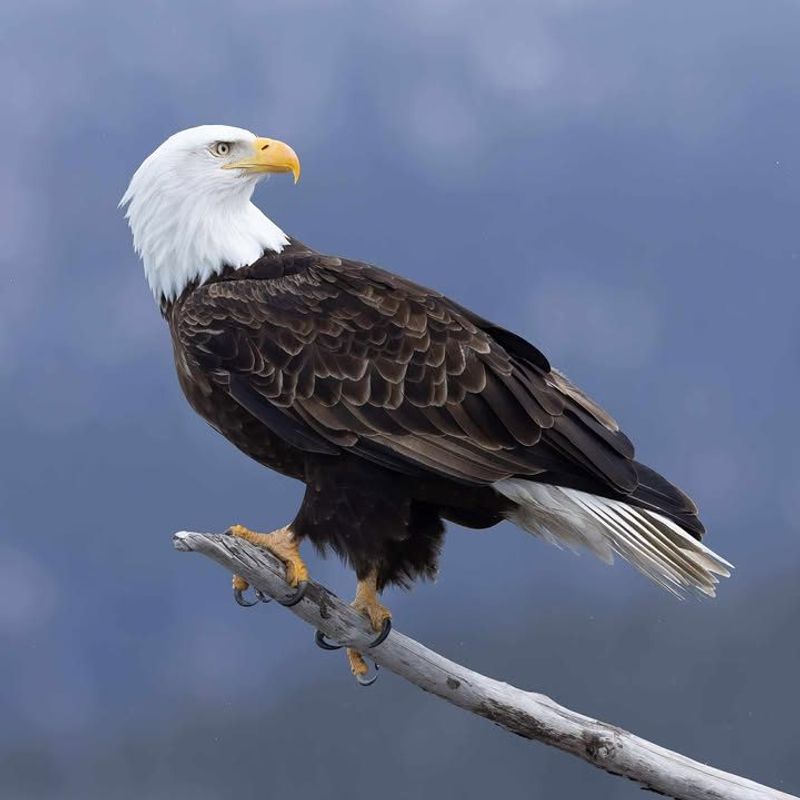
While known for their sharp vision, Bald Eagles also possess excellent hearing. Their ears, hidden under feathers, allow them to detect sounds with remarkable clarity. This auditory prowess complements their hunting skills, enabling them to locate prey even in challenging conditions.
Their ability to discern subtle sounds in the environment aids in communication and predator awareness.
Understanding their auditory capabilities reveals another layer of their complex sensory world, showcasing nature’s intricate design in equipping them for survival.
Sibling Rivalry

Life in a Bald Eagle nest is not without its challenges. Sibling rivalry is a common occurrence, as chicks compete for food and parental attention. This competition, while fierce, is part of natural selection, where only the strongest survive.
Parents often prioritize the most robust chick, ensuring its survival and future contribution to the gene pool.
These early-life struggles prepare the young eagles for the harsh realities of the wild, where resilience is key. The nest becomes a training ground, forging the future leaders of the skies.
Migration Mysteries

Bald Eagles are partial migrants, with northern populations moving south during winter. Their migration is a spectacle, with eagles traveling thousands of miles to find food and suitable climates.
They rely on thermal currents to cover long distances with minimal energy expenditure.
This migratory behavior showcases their adaptability and resilience, as they traverse diverse landscapes. Observing their migration offers insights into their survival strategies and the challenges they face along the way.
Mate for Life
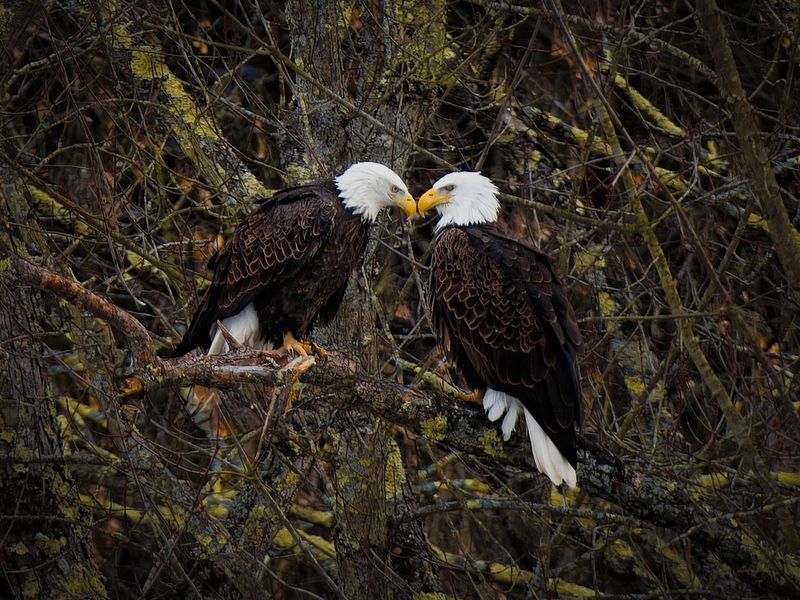
Bald Eagles are known for their monogamous nature. Once paired, they typically mate for life, showcasing a deep bond and commitment to raising their young.
Their partnership involves mutual cooperation in nest building, hunting, and chick rearing. This teamwork ensures the survival of their offspring in a competitive environment.
Their loyalty and dedication are touching reminders of nature’s enduring relationships, where trust and collaboration lead to success.
Vocal Communicators

Bald Eagles communicate through a range of vocalizations, from high-pitched whistles to soft chirps. These calls serve various purposes, including signaling territory, attracting a mate, or alerting others of potential danger.
Their vocal repertoire is essential for maintaining social bonds and coordinating activities within a pair or family group.
Each call carries specific meanings, reflecting their complex social structure and adaptability. Listening to their calls offers a glimpse into their interactions and behavioral dynamics.
Feathered Travelers
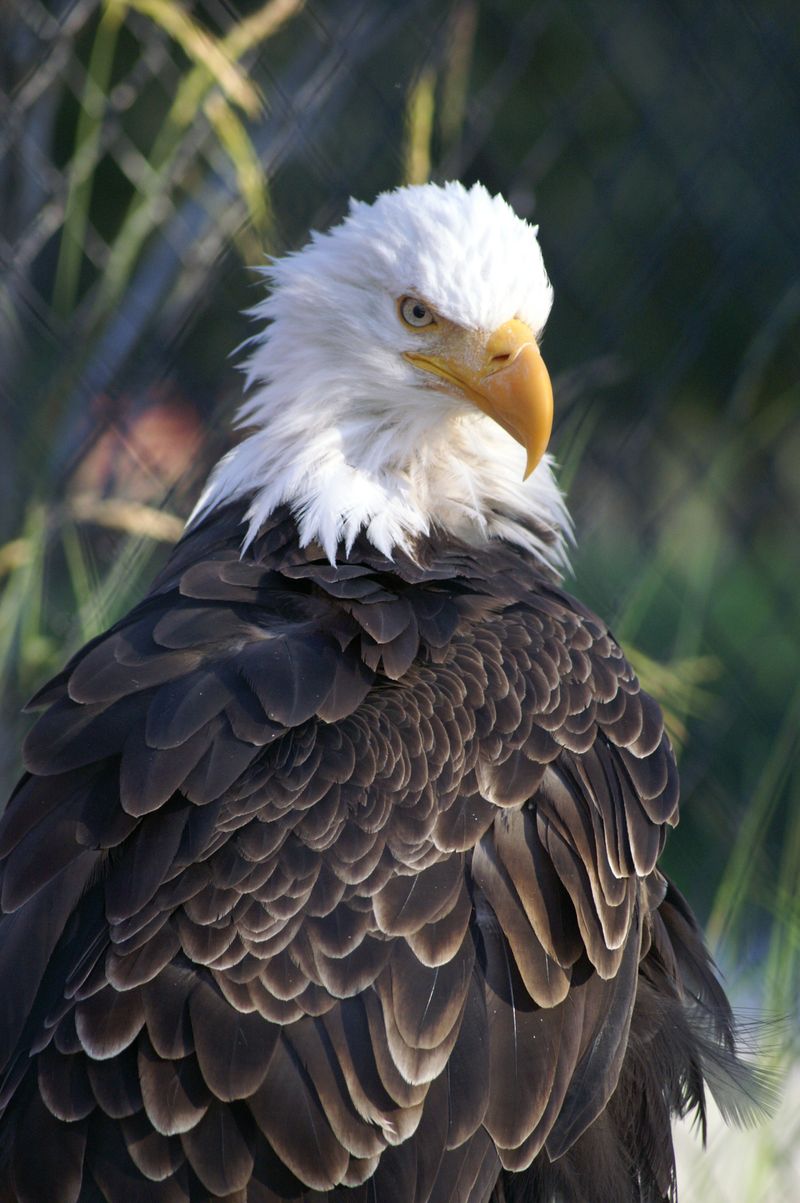
Bald Eagle feathers are marvels of nature, designed for strength and efficiency. Each feather is lightweight yet durable, enabling them to soar effortlessly through the skies.
Their feathers are crucial for insulation, keeping them warm in harsh weather. Regular preening keeps them in top condition, ensuring optimal flight performance.
The molting process allows for regeneration, with new feathers replacing old ones, maintaining their majestic appearance. Feathers are not just about flight; they are integral to their identity and survival.
Cultural Icons
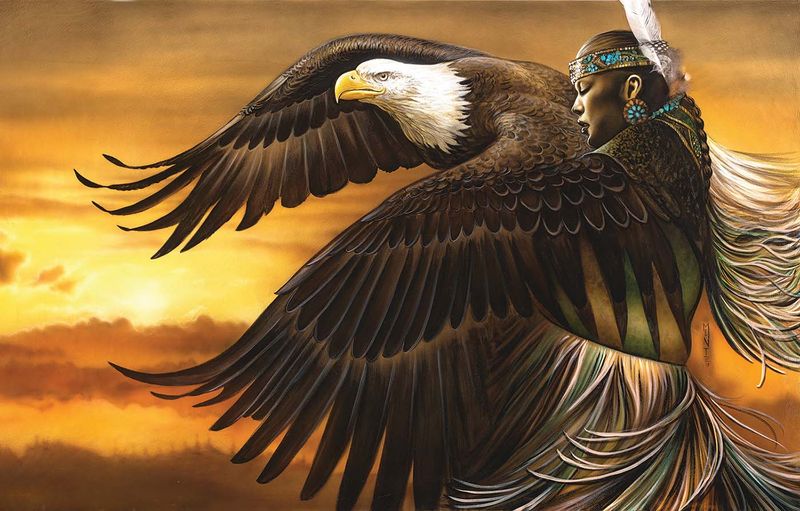
The Bald Eagle holds profound significance in various cultures, especially among Native American tribes. Revered as a sacred messenger, it is often associated with wisdom, courage, and spiritual strength.
Eagle feathers are considered powerful symbols of honor and are used in rituals and ceremonies.
This cultural reverence highlights the eagle’s role in human history and its enduring influence on beliefs and traditions. Its presence in folklore and mythology underscores a deep connection with nature and the spiritual world.

